
by Mary Salinas | Sep 24, 2015
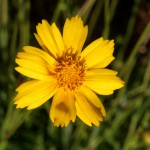
Native Lanceleaf Coreopsis. UF/IFAS Photo: Thomas Wright.
In our demonstration garden we are enjoying the small but vibrant blooms of our state wildflower Coreopsis, also commonly known as tickseed. After many years of its use in the Florida highways beautification program, Coreopsis was adopted as Florida’s official state wildflower in 1991.
Florida can boast of 16 different species of Coreopsis that occur in the state with most blooming in the spring but some species blooming in the summer to later in the fall. Some of those species are rare, endangered or only found in very limited areas of the state, while others are quite common throughout the state.
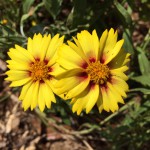
Photo credit: Mary Derrick, UF/IFAS.
Many lovely new cultivars have been introduced for our enjoyment by plant breeders through cross-breeding and selection. Some you can see in the accompanying photographs in this article.
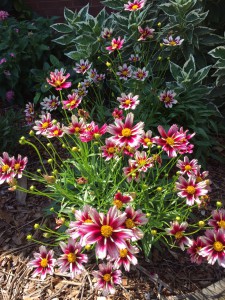
Photo credit: Mary Derrick, UF/IFAS.
Coreopsis is an annual or short-lived perennial that makes a great addition to your garden beds. And the bees and butterflies will enjoy them! The numerous flowers readily produce seed for naturalizing in the landscape. Plant them in a sunny spot in the landscape in evenly watered but well-drained soil. Removing the dead blooms will encourage plants to prolong their blooming; you can also save the seed for replanting in new areas of your landscape.
For more information:
History of Coreopsis as Florida State Wildflower
Gardening Solutions: Coreopsis
Florida Wildflower Foundation
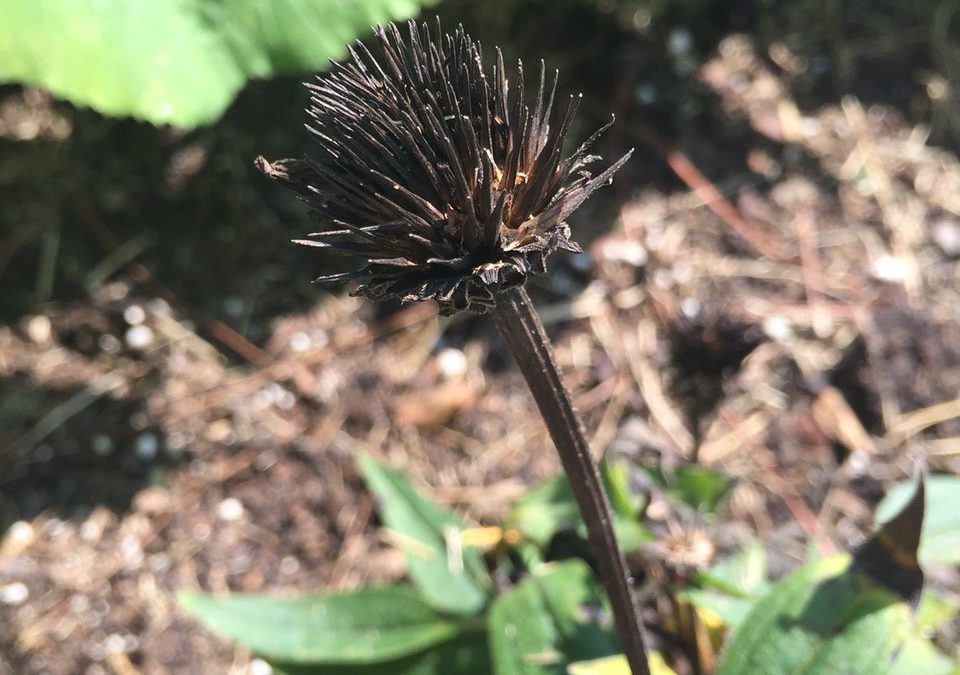
by Mary Salinas | Sep 9, 2015
You’ve grown some wonderful vegetables, annuals or perennials and you would like to save some of the seed from those plants to have for planting in the future. This is a great way to get more of the plants you know and love while saving on the expense of new plants. One exception are plants that are F1 hybrids; seeds from these plants will produce crops quite dissimilar to the parent.
First, you need to collect ripe seed from the desired plants. How do you know when the seeds are ripe and ready to harvest? The strategies for annuals/perennials and vegetable plants differ.
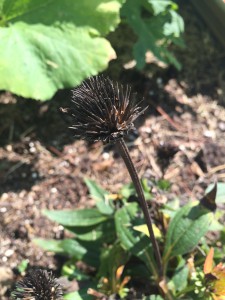
The ripe seedhead of a coneflower. Photo credit: Mary Derrick, UF/IFAS Extension.
For annuals and perennials that flower without making a fruit, wait until the flower has dried up and the seed head is brown and dead-looking. The seeds are then mature and ready to harvest. Take a look at the photo of the coneflower seedhead for reference. These seeds are already dry and can be put into an envelope and then into a sealed jar or plastic stage bag that contains a desiccant to absorb any excess moisture. There are a few options for desiccants: the little packets that come in vitamin bottles and purses to keep them dry, cornmeal or dried milk in bottom of the bag. Be sure to label your envelope with the date and name of your plant seeds. Store in the refrigerator.
When you are saving seed from a vegetable that has seeds inside it such as a tomato, pepper or squash, harvest the vegetable when it is ripe and ready to eat and scoop out the seeds and wash away all other plant parts from the seed. These seeds are very moist and if stored in this state, they will rot into a mess. You want to get the moisture content below about 8% for long term storage. There are several methods:
- If the humidity is low and the temperature high, (I know, those can be rare conditions for Florida) you can put the seeds in a single layer on a baking sheet in the shade to let them dry all day.
- Another option is to take that baking sheet with a single layer of seeds and put it in a 100° oven for 6 hours with the door open. It’s crucial to monitor your oven temperatures as those above 100° will kill the seeds.
Once the seeds are dried sufficiently, store them as described above for flower seeds. Your seeds can then last for several years.
For more information:
Seed Saving from Colorado State Extension
Saving Vegetable Seeds from University of Minnesota Extension
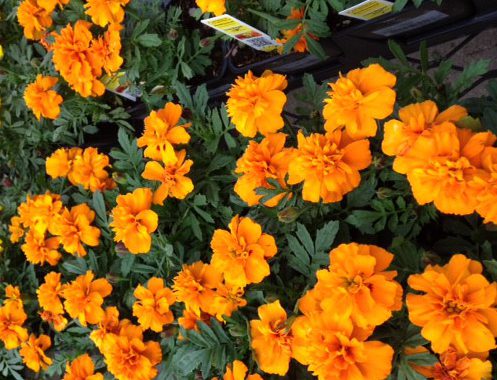
by Larry Williams | Jun 9, 2015
There are areas in most landscapes where it just is not practical or possible to bring in the tiller and create a flowerbed. A little imagination, a decorative container and appropriate plants can turn a bare spot into a splash of color.
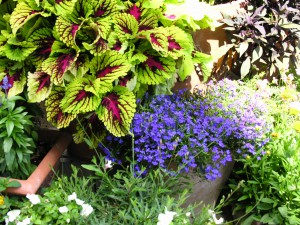
Colorful containers bring life to your small spaces.
Consider using a container of annuals to add color to a backyard deck or a paved entrance way. Or what about that area under the tree where grass doesn’t want to grow and where it would be difficult to till without damaging the tree’s roots and the tiller? How about the dry spot where there is no irrigation but where it would be more practical to occasionally hand water a well-placed container of colorful caladiums?
A wide variety of flowering annuals work well in containers. But be sure to select plants based on the exposure. Some annuals will quickly bake from full sun exposure and others will become leggy and bloom poorly in a shady location.
Impatiens and begonias do well in shaded places and remain in flower almost continuously. Caladiums with their colorful leaves also do well in containers in shady areas.
It’s more difficult to grow container plants in full sun but there are some annuals to consider for sunny spots. A few to consider include blanket flower (Gaillardia), portulaca and salvia.
There are many other annuals that can be successfully grown in containers. There are even sun-tolerant begonia and sun coleus varieties for full-sun places.
Don’t be afraid to try something different. To learn more about this topic, please see:
Container Gardens for Outdoor Spaces
Gardening Solutions
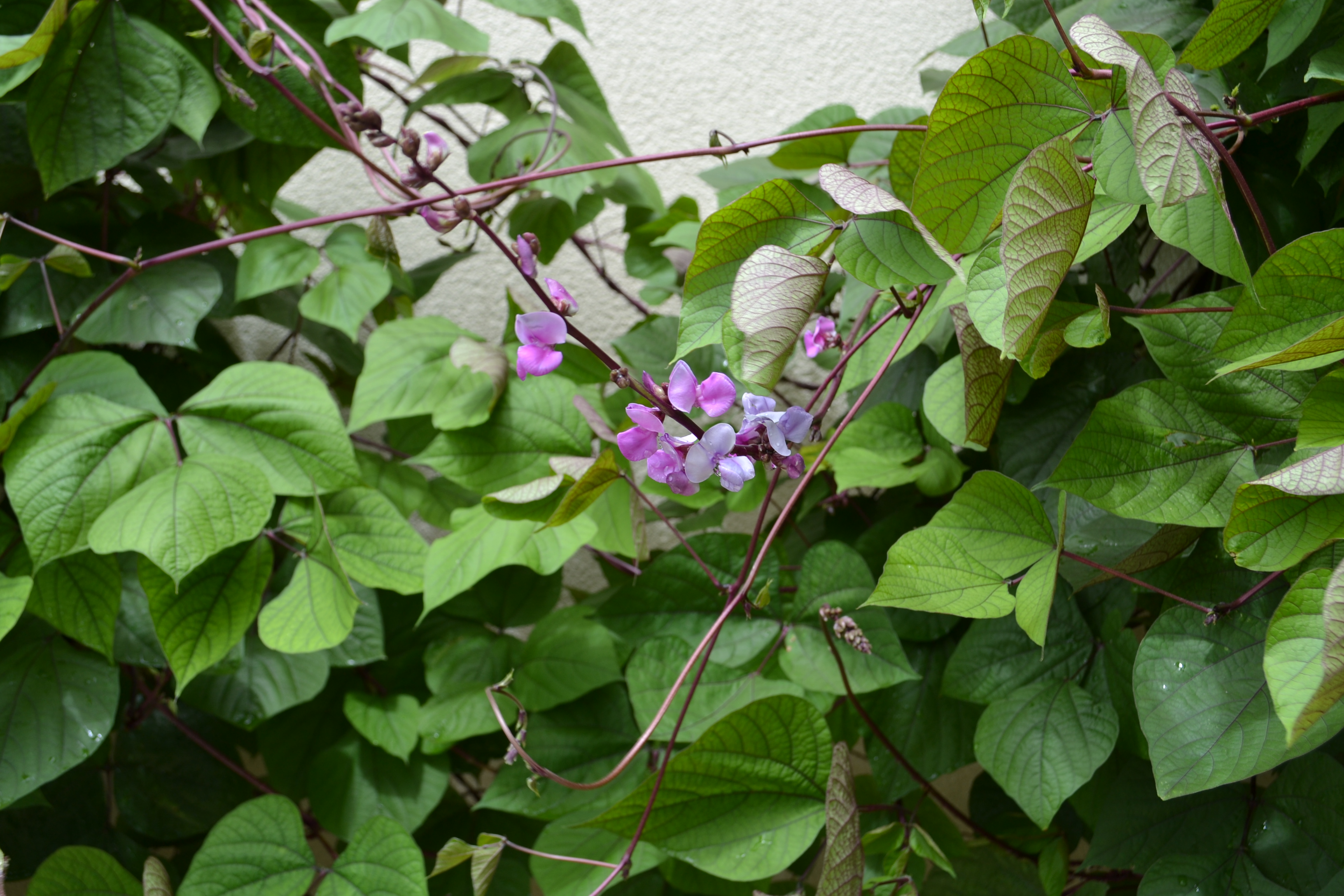
by Beth Bolles | May 6, 2015
Everyone is interested in growing an easy plant that offers interest all throughout the warm season. Look no further than an old favorite, the purple hyacinth bean, Lablab purpurea.
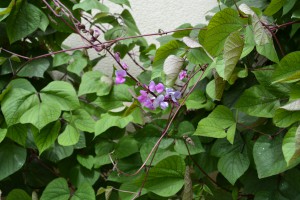
Purple flowers are held above foliage.
An warm season annual vine that grows easily from seeds plants directly in the ground or started in small pots, purple hyacinth bean will quickly cover a trellis, fence, or other sturdy support that you provide. One of the features will be beautiful purple flowers that form on purple stems during the summer. Purple pods will form after the flowers fade and persist until a frost. Mature seeds can be collected and saved for planting the following spring. Seeds that fall to the ground are likely to sprout on their own when soils warm again the following year.
Even though purple hyacinth bean is an edible plant in many parts of the world, it is mostly considered an ornamental in our area. One of the reasons is that raw beans are poisonous and must be properly cooked before eaten. Because of the toxicity of the beans, it is best to plant in the ornamental garden rather than the edible garden.
Additional features of this easy vine are that it is low maintenance, requiring little fertilization and it attracts bees and butterflies. Install seeds or transplants in well drained soil in full sun and you are ensured a plant that will attract attention.

by Julie McConnell | Mar 10, 2015
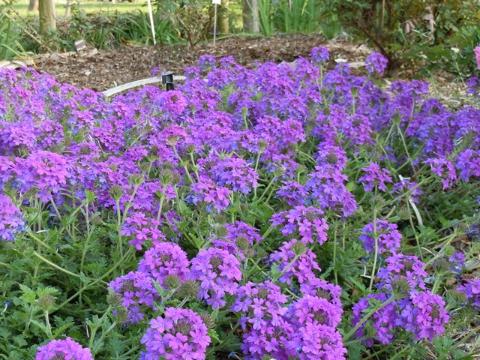
Verbena in full bloom. Image Credit: David W. Marshall, UF / IFAS
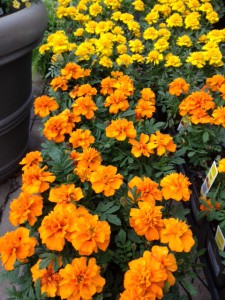
Marigold
As the weather warms and we approach the last expected frost date, it’s time to start planning our warm season annuals.
Annuals are plants that complete their life cycle in one season. In North Florida, we recognize two annual color seasons: Winter annuals (cool season) and Summer annuals (warm season).
Warm season annuals generally cannot tolerate freezing temperatures and perform best during the long, hot days of spring and summer. In our climate we have many choices for our warm season or summer color beds.
It is an extremely important part of the planning process to determine if the site is shaded, part sun, or full sun. If it is part sun, note whether plants will receive direct sunlight in the morning or afternoon and how many hours of sunlight are expected. Check water sources for the site. Different plants have different water needs, so you would not want to install plants with high water needs in a site with no irrigation or limited access to water.
Another factor to consider in coastal areas is the possibility of salt spray or introduction through water sources. Some plants can tolerate salt and others are very sensitive. If it is likely that plants may be exposed to salt, choose plants with a medium to high salt tolerance level.
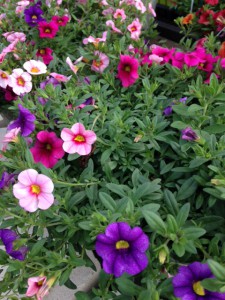
Calibrachoa
After you have assessed your site and determined what conditions will affect your plants, start with your plant selection.
Remember to group plants with similar needs together so that maintenance will be simpler and your plants will have the greatest opportunity to perform at their best. Most annuals will have some fertilizer needs due to their short life cycle. Be sure to amend the soil and provide slow release fertilizer throughout the growing season at the rate needed by your chosen plants. Do not apply fertilizer to plants that are suffering from drought stress, insect infestation, or disease infection.
When selecting plants from a garden center, look for healthy plants with well-developed root systems. If you pull the plant out of the pot you should be able to see bright white roots that are holding the soil together to the shape of the pot. If the root ball falls apart,the plant is not fully rooted and may struggle to get established. Look for disease, weed, and insect free plants so that you do not introduce a problem into your landscape.
To learn more about see Gardening with Annuals in Florida.
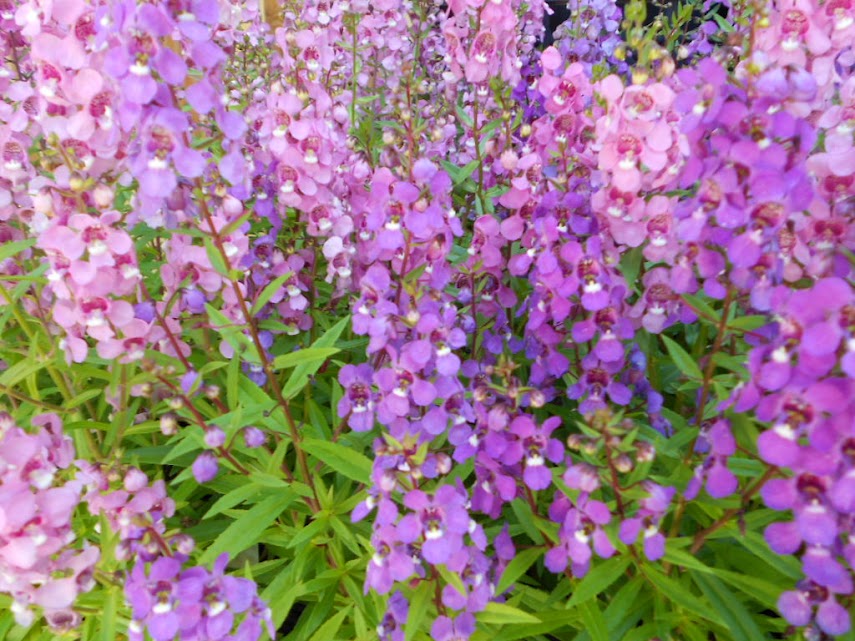
Agelonia
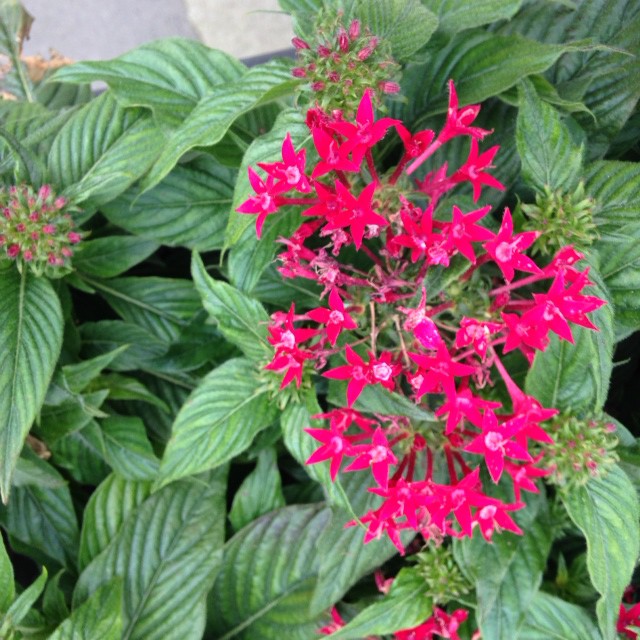
Pentas
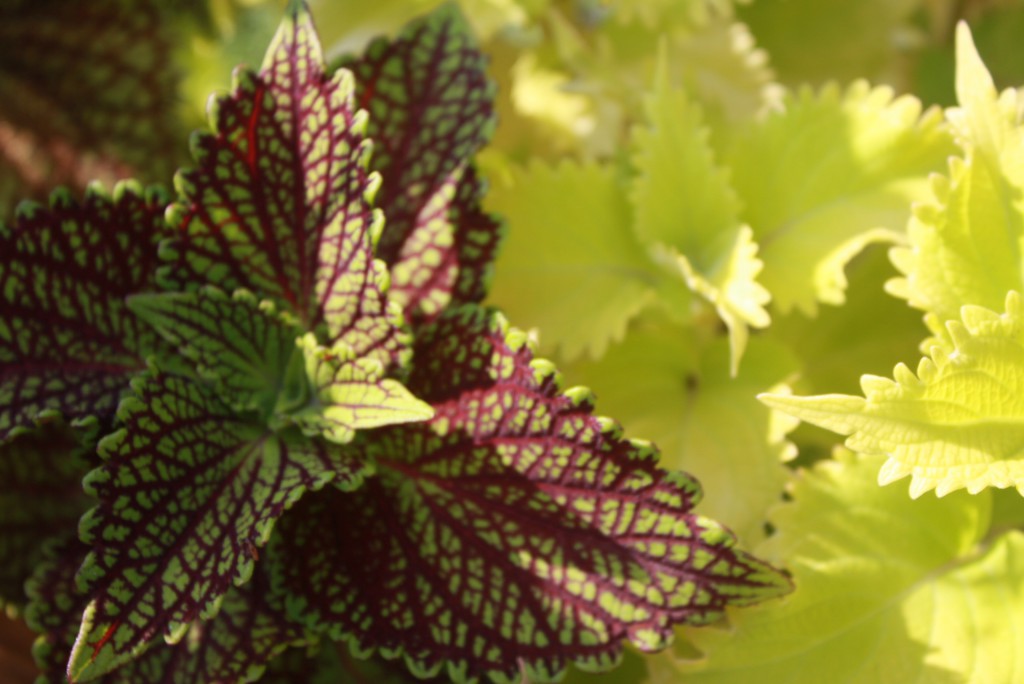
Coleus
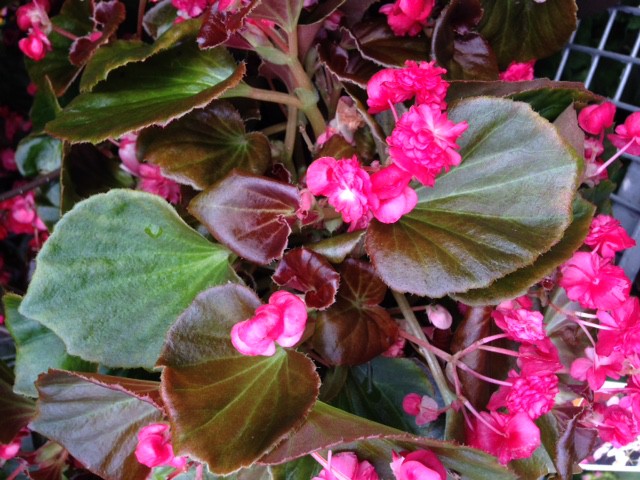
Begonia

















